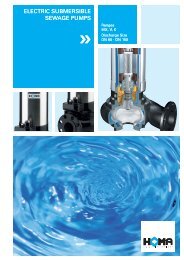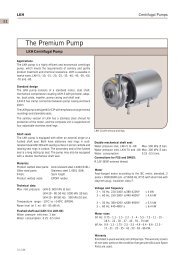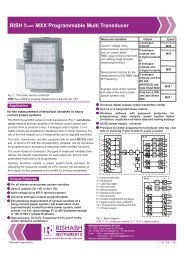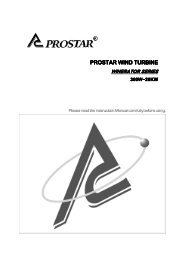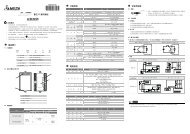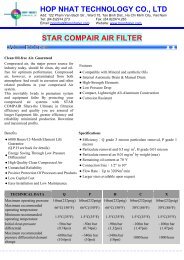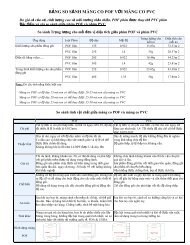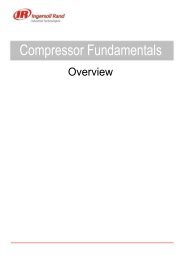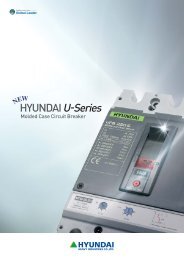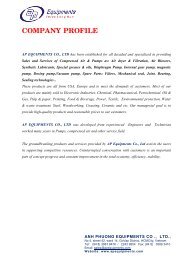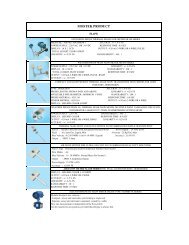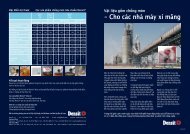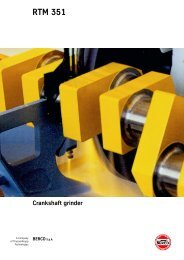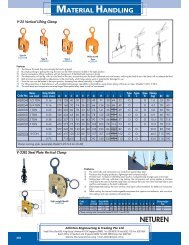BLOWN FILM
BLOWN FILM
BLOWN FILM
You also want an ePaper? Increase the reach of your titles
YUMPU automatically turns print PDFs into web optimized ePapers that Google loves.
<strong>BLOWN</strong><br />
<strong>FILM</strong><br />
PROCESSING<br />
<strong>FILM</strong> ORIENTATION<br />
Orientation is understood to mean the postextrusion<br />
orientation of films in the machine<br />
and/or transverse direction. Biaxial orientation<br />
is the post-extrusion orientation in<br />
both directions whereby monoaxial orientation<br />
refers only to post-extrusion orientation<br />
in the machine direction.<br />
In comparison to non-oriented films of similar<br />
thickness oriented films display superior<br />
mechanical and optical properties. In addition<br />
with barrier films orientation also<br />
improves substantially the Gas and Water<br />
vapour barrier properties. Due to these effects<br />
it is possible to manufacture packaging<br />
films with reduced thickness and as a result<br />
with less raw material to obtain films with<br />
similar properties to non-oriented films. The<br />
potential for cost saving is very high.<br />
Oriented barrier films are ideally suited to<br />
water- and aromaproof food packaging for<br />
e. g. cheese, meat and spices. For the enduser<br />
not only the barrier properties play an<br />
important role but also the tear-opening<br />
characteristics which can be positively<br />
influenced during the orientation process.<br />
ALPINE supplies monoaxial gap orientation<br />
lines (MDO) as downstream equipment in<br />
the film manufacturing process.<br />
Essentially a MDO unit consists of two sets<br />
of nip rollers which are so arranged that a<br />
small adjustable gap is obtained. In this gap<br />
MONOAXIAL ORIENTATION LINES<br />
the film has no contact with the rollers and<br />
can be "stretched". Before entering into<br />
the nip rollers the film is past over heated<br />
rollers and upon leaving the nip rollers is<br />
past over a set of tempering rollers. As all<br />
the rollers are driven and the applied tension<br />
is effective only in the orientation gap,<br />
very thin films can be easily produced.<br />
PROCESS CONTROL<br />
The control and visualisation of the orientation<br />
process is effected by means of ALPINE<br />
software OrVis (Orientation Visualisation<br />
Program) on out-of-line units or parallel<br />
with ALPINE software ExVis on in-line<br />
machines. All important Product Process<br />
and operating data are shown either graphically<br />
or numerically.<br />
CHARACTERISTICS<br />
-Working widths up to 2500 mm<br />
- Exit speeds up to 250 m/min<br />
- In-line operation with a blown film line<br />
or cast film line<br />
- or out-of-line operation from roll to roll<br />
TECHNICAL DATA<br />
- Heating zone<br />
Large circumferential contact for<br />
efficient heat transfer<br />
Tempering with oil<br />
Two tempering units:<br />
number 1 for heater roller 1,<br />
number 2 for heater roller 2 and 3<br />
Lay-on rollers on the first and last<br />
heater rollers<br />
-Orientation zone<br />
Orientation ratio stepless up to 10:1<br />
Tempering with oil<br />
Two tempering units one for each steal<br />
roller<br />
Pneumatically operated rubberised<br />
rollers<br />
-Tempering zone<br />
Tempering with oil<br />
One tempering unit for all tempering<br />
rollers<br />
Independent drive and control for each<br />
tempered roller<br />
- Cooling zone<br />
Large circumferential contact to ensure<br />
efficient film cooling<br />
Cooling medium water<br />
Lay-on roller on the first cooling roller<br />
Cooling unit for all cooling rollers<br />
PROCESS TECHNOLOGIES FOR TOMORROW SM 12 / 13<br />
PROCESS TECHNOLOGIES FOR TOMORROW



